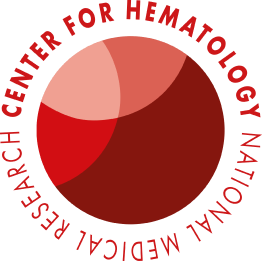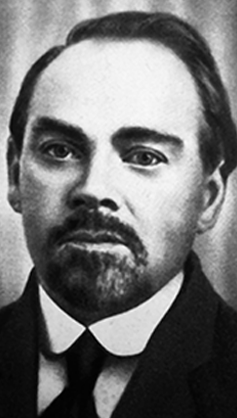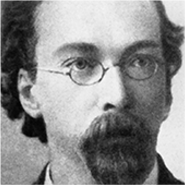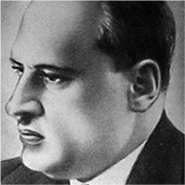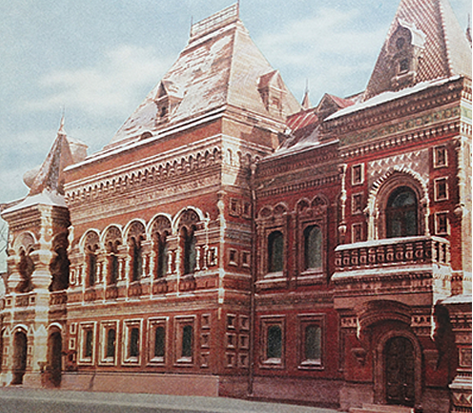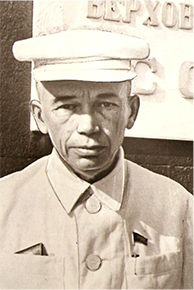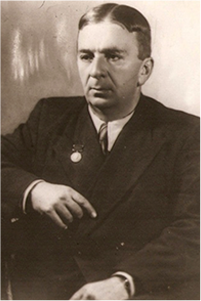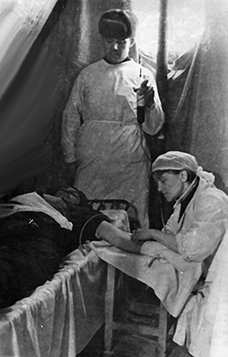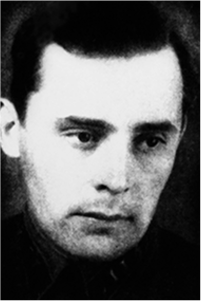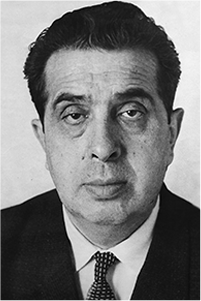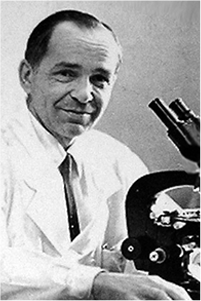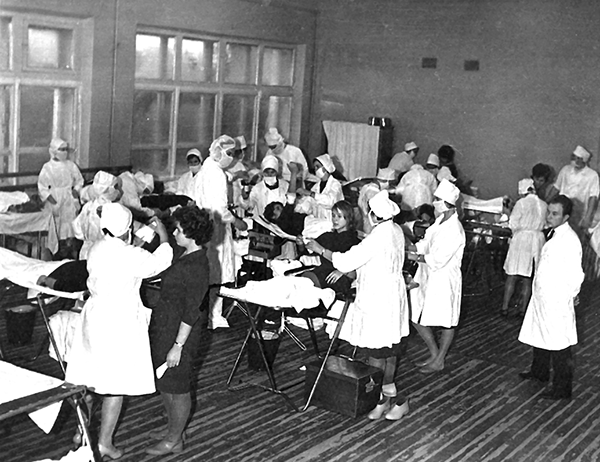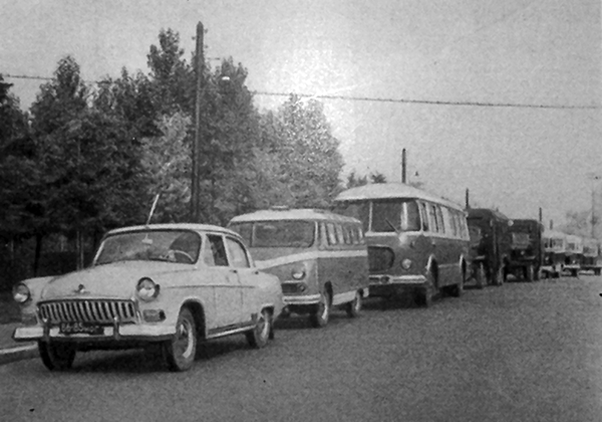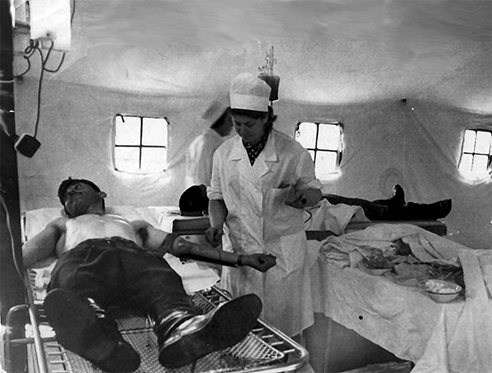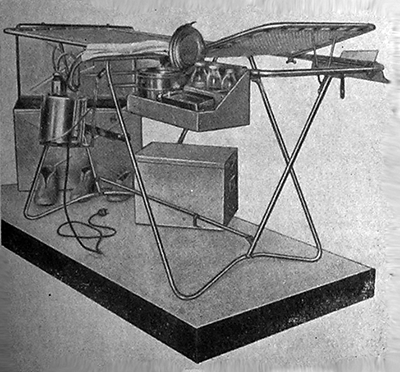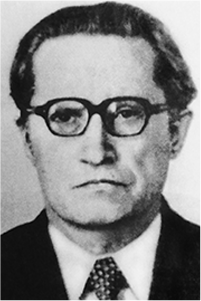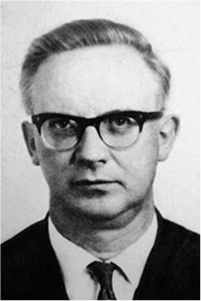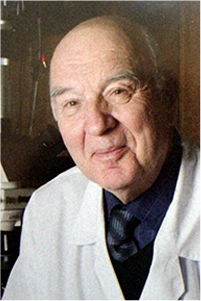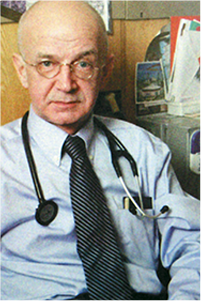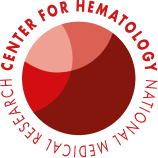- Official Information
Official Information
- A Word from Our Director
- About the NMRC for Hematology
- Structure
- Administration
- Departments
- History
History
- Our History
- All Directors of the NMRC for Hematology
All Directors of the NMRC for Hematology
- Our Awards
- Printed Publications of the NMRC for Hematology
- Gallery
- News
- Reviews
- Press Office
- Useful Resources
- Medical Tourism
- Consultative Doctors
- Clinical Departments
- Our Doctors
- High-tech Medical Care
- Preparation for Diagnostic Tests
Preparation for Diagnostic Tests
- Preparation instructions for a rectoromanoscopy
- Preparation instructions for low-dose computed tomography (CT) of skeletal bones without bolus contrast enhancement
- Preparation instructions for computed tomography (CT) of the thoracic cavity, brain, paranasal sinuses, orbits, osteoarticular apparatus, soft tissues of the neck without bolus contrast enhancement
- Preparation instructions for magnetic resonance imaging (MRI)
- Preparation instructions for a colonoscopy
- Indications for ultrasound examination of veins and arteries
- Preparation instructions for an excretory urography
- Preparation instructions for computed tomography (CT) of the thoracic cavity, brain, urinary system, vessels of the head and neck, aortography with bolus contrast enhancement
- Preparation instructions for computed tomography (CT) of the abdominal and pelvic organs with and without bolus contrast enhancement
- Preparation instructions for an esophagogastroduodenoscopy (EGD), bronchoscopy, laryngoscopy
- Preparation instructions for an ultrasound examination of the abdominal organs
- Indications and contraindications for echocardiography (ECHO-KG)
- Patient Stories
- Procedure for Issuing Medical Documentation
- Internal Regulations for Patients and Other Visitors
- Rules for Visiting Hospital Patients
- About
About
- Official Information
Official Information
- A Word from Our Director
- About the NMRC for Hematology
- Structure
- Administration
- Departments
- History
History
- Our History
- All Directors of the NMRC for Hematology
All Directors of the NMRC for Hematology
- Our Awards
- Printed Publications of the NMRC for Hematology
- Gallery
- News
- Reviews
- Press Office
- Useful Resources
- Patients
Patients- Medical Tourism
- Consultative Doctors
- Clinical Departments
- Our Doctors
- High-tech Medical Care
- Preparation for Diagnostic Tests
Preparation for Diagnostic Tests
- Preparation instructions for a rectoromanoscopy
- Preparation instructions for low-dose computed tomography (CT) of skeletal bones without bolus contrast enhancement
- Preparation instructions for computed tomography (CT) of the thoracic cavity, brain, paranasal sinuses, orbits, osteoarticular apparatus, soft tissues of the neck without bolus contrast enhancement
- Preparation instructions for magnetic resonance imaging (MRI)
- Preparation instructions for a colonoscopy
- Indications for ultrasound examination of veins and arteries
- Preparation instructions for an excretory urography
- Preparation instructions for computed tomography (CT) of the thoracic cavity, brain, urinary system, vessels of the head and neck, aortography with bolus contrast enhancement
- Preparation instructions for computed tomography (CT) of the abdominal and pelvic organs with and without bolus contrast enhancement
- Preparation instructions for an esophagogastroduodenoscopy (EGD), bronchoscopy, laryngoscopy
- Preparation instructions for an ultrasound examination of the abdominal organs
- Indications and contraindications for echocardiography (ECHO-KG)
- Patient Stories
- Procedure for Issuing Medical Documentation
- Internal Regulations for Patients and Other Visitors
- Rules for Visiting Hospital Patients
- Science


The decision to establish the Institute of Blood Transfusion was made by the USSR Labor and Defense Council on February 26, 1926. Specialized institutions of a similar profile did not exist at that time, not only in the USSR, but also in the rest of the world.
The organizer of this institute was an outstanding figure of that era, a versatile, educated, and gifted person: a doctor, economist, naturalist, revolutionary, and science fiction writer Alexander Alexandrovich Bogdanov (Malinovsky) .
In those years, the work of the Institute was organized by famous domestic scientists and doctors: S.L. Maloletkov, I.I. Sobolev, D.A. Gudim-Levkovich, H.H. Vlados, M.P. Konchalovsky.
They set the foundations of modern production and clinical transfusion (rules for blood preparation, examination of donors, production of group sera, indications for blood transfusion).
![]() The building that housed the Institute in the first years of
The building that housed the Institute in the first years of
its existence is the former mansion of the merchant Igumnov.
Located on Bol’shaya Yakimanka Street, the building is
now the residence of the French ambassador in Moscow.From the very beginning, two directions were outlined in the research activities of the Institute - the study of the therapeutic efficacy of blood transfusion in various pathological conditions and the study of exchange transfusions. The scientific and practical tasks of the Institute were the study and development of issues related to blood transfusion, the introduction of a blood transfusion method, the provision of standard sera, and the creation of a donor bank.
The first patient was admitted to the Institute on June 2, 1926. By October 1927, the number of blood transfusions at the Institute was more than 200, and by April 1928 that number had more than doubled.
In April 1928 Bogdanov died tragically as a result of a blood transfusion experiment performed on himself. Shortly after, the Institute was named after him.
![]() Alexander Bogomolets
Alexander BogomoletsAfter the death of Alexander Bogdanov, Alexander Bogomolets took over the management of the Institute of Blood Transfusion. He was a Soviet pathophysiologist and public figure who worked at the Institute from 1926 to 1931. During this period, along with blood transfusion, the work plan of the Institute included hematological topics dedicated to the diagnosis and treatment of patients with diseases of the blood system.
Bogomolets entered the history of the Institute and medical science as the originator of the theory of colloidoclasia, which, in his opinion, was the underlying cause of many pathological conditions, including allergies and a number of diseases. The phenomenon of calloidoclasia was later explained by lethal complications after blood transfusions of non-compatible groups.
Under the guidance of Professor Bogomolets the rules for examining donors were developed and the theoretical foundations of the doctrine of blood transfusion were formulated. It is at this time that the first collection of the Institute's works was prepared. Bogomolets organized the first experimental biological laboratory to study the problem of "the mechanism of action of blood transfusion." The substantiation of the stimulating effect of blood transfusion, confirmed by a large number of experimental and clinical studies, contributed to the introduction of the blood transfusion method into the medical practice of patients with a therapeutic profile.
![]() Alexander Bogomolets
Alexander BogomoletsIn 1931, Andrey Bagdasarov was appointed Director of the Institute, becoming its permanent head for 30 years.
Bagdasarov was one of the prominent organizers of Soviet health care. In a short period of time, the Institute became the ideologue and creator of the blood service in the USSR. From 1926 to 1940, specific conditions were defined to ensure the successful use of blood transfusion in peacetime and in times of war. The availability of a well-prepared organization of blood services behind battle lines, in the army and in the navy, the formation of powerful donor cadres, the development of methods for preserving and long-term storage of blood, the availability of universal blood and the organization of its transportation, and training of medical and nursing staff on the methods of blood transfusion were of paramount importance. During this time, original domestic methods of hemotherapy for surgical and internal diseases, issues of the clinic, and treatment of diseases of the blood system were advanced.
In 1935, achievements in the field of transfusiology were presented at the International Congress in Rome, and in 1937 - in Paris.
Bagdasarov took on the laborious task of creating republican blood transfusion institutes: Georgian, Uzbek, Azerbaijan, Lvov, Armenian, Kirov, as well as numerous stations and departments of blood transfusion in the USSR.
By the beginning of the Great Patriotic War (WWII), the country had an extensive blood service functioning according to uniform rules, thanks to which the Soviet army was fully provided with donor blood. It was a well-organized system with 7 institutes, 170 stations, and 1,778 blood transfusion rooms.
All Directors of the NMRC for Hematology:from 1926 to 1928 - Alexander Alexandrovich Bogdanov (Malinovsky),from 1928 to 1931 - Alexander Alexandrovich Bogomoletsfrom 1932 to 1961 - Andrey Arkadievich Bagdasarov,from 1961 to 1972 - Anatoly Efimovich Kiselev,from 1972 to 1982 - Oleg Konstantinovich Gavrilov,from 1982 to 1987 - Anatoly Grigorievich Fedotenkov,from 1987 to 2011 - Andrey Ivanovich Vorobyov,from 2011 to 2021 - Valeriy Grigorievich Savchenko,from 2021 to present- Elena Nikolaevna Parovichnikova.The period of the Great Patriotic War (WWII) is particularly exceptional chapter in the history of the National Medical Research Center for Hematology.
The Chief Transfusiologist of the Soviet Army during the war was the Director of the Institute, Bagdasarov. It was he and P.L. Seltsovsky who compiled the first instructions on blood transfusion for military doctors.
Under the direction of the Institute, a massive procurement of blood and blood-substituting fluids was carried out to meet the needs of medical institutions at and behind the battle lines.
The staff of the Institute regularly went to the front-line hospitals, where freshly prepared preserved blood was poured to the wounded. Medical personnel were also trained in these methods. In 1942 the first mobile front-line blood transfusion station was organized near Smolensk by military doctor Anatoly Kiselev .
In a lorry with his own transfusion station, he followed the advancing units of the Soviet Army and provided the front with the necessary preserved donor blood. This initiative formed the basis for the creation of mobile blood transfusion stations, which successfully operated on all fronts of the war.
![]() Anatoly Kiselev
Anatoly KiselevThe blood service, based on scientific and organizational methods developed at the Institute of Blood Transfusion, provided over 7 million transfusions during the war years, transfusing about 3 million liters of blood.
In 1944, for services to the Fatherland, the Institute was awarded the Order of Lenin and renamed the Central Order of Lenin Institute of Blood Transfusion.
The expediency of abandoning whole blood transfusions and switching to component hemotherapy was first proposed by V.A. Arganenko.
In the post-war years, the Institute worked out the problems of the effect of transfused blood and its components on the patient's body and the issues of the safety of transfusion therapy and its effectiveness. The problem of the Rh factor was expanded on, and immunohematology was developed. New research had also begun on the preservation of tissues and bone marrow for transplantation in the clinic and the fractionation of plasma proteins in order to obtain valuable therapeutic blood products.
All names of the Center:1926 - Institute of Blood Transfusion,1938 - Central Institute of Blood Transfusion,1944 - Central Order of Lenin Institute of Blood Transfusion,1976 - Central Institute of Hematology and Blood Transfusion,1981 - Central Research Institute of Hematology and Blood Transfusion,1988 - Hematological Research Center of the USSR Ministry of Health,1991 - Hematological Research Center of the USSR Academy of Medical Sciences,1993 - Hematological Research Center of the Russian Academy of Medical Sciences,1993 - State non-profit Institution- Hematological Research Center of the Russian Academy of Medical Sciences,2001 – State Institution- Hematological Research Center of the Russian Academy of Medical Sciences,2009 –Hematological Research Center of the Russian Academy of Medical Sciences,2010 - Hematological Research Center of the Russian Ministry of Health ,2012 - State Research Center of the Russian Ministry of Health,2017 - National Medical Research Center for HematologyOne of the main achievements of Andrey Bagdasarov was the selection of strong scientific personnel and their preservation during the period of the defeat of medical science and biology from 1948-1953. Under Bagdasarov, a strong hematological clinic was created, which was headed first by H.H. Vlados and then by M.S. Dultsin.
During these difficult years, one of the brightest hematologists of the Institute, Y. I. Lorie joined the clinic.
After the death of A.A. Bagdasarov, Anatoly Kiselev headed the Institute for the next decade .
He organized research on the mass preparation of blood and its components, methods of cryopreservation of blood, and the development of blood products and blood substitutes (albumin, gamma globulin, protein). Kiselev turned away from the transfusion of whole blood and focused on the transfusion of its components - erythrocytes, platelets and plasma. He mobilized the teams of the country's institutes and blood transfusion stations to develop the principles of gratuitous donation and its implementation into practice, established methods for the preparation of blood and its components in field conditions, and organized the structure and equipment of field teams.
![]() The first mass trip to collect blood,
The first mass trip to collect blood,
Vladimir, 1963![]() The convoy of the mobile blood brigade of the Institute.
The convoy of the mobile blood brigade of the Institute.The main task of the blood service was to provide medical institutions with donor blood, its components and preparations. Among the various forms of donation, gratuitous donation was of the most importance. Annual exercises were organized consisting of field trips to collect blood by brigades of 20-25 people. There were many young people in the brigades - newcomers. The duration of the visits lasted 2-3 weeks, visiting regions that were all very diverse: Tula region, Georgia, Ukraine ...
A special laboratory (design bureau) was created which developed equipment for field teams: donor tables with hanging devices, storage boxes for transporting materials, vials, blood collection systems, and insulating containers for transporting harvested blood.
![]() Mobile team for blood procurement
Mobile team for blood procurement
in Lankaran, Azerbaijan, 60s.![]() Equipment for mobile blood collection teams.
Equipment for mobile blood collection teams.Technical documentation was drawn up for a new mobile station for the collection of blood by car. The Pavlovsk Automobile Plant produced a specially equipped standard PAZ bus with folding tables for taking blood.
![]() Oleg Gavrilov
Oleg GavrilovThe Director of the Institute from 1972 to 1981 was Oleg Gavrilov . The merit of him as director of the Central Institute of Hematology and Blood Transfusion was the evolution of the most pressing problems in the service of blood and transfusiology.
Among these issues: the development and implementation of plasticate equipment for blood service, modern preservative solutions for blood and its components; the advancement of the problem of fractionation of donor blood into components; the advancement of the problem of blood substitutes and, in particular, with the function of oxygen transfer; development and advancement of methods for the study of donor blood to prevent viral infection; publication of modern guidelines and reference books on industrial and clinical transfusiology; the development of broad international relations, in particular with the United States, which made it possible to conduct research at a modern level and improve the scientific qualifications of employees; extensive developments in problems of blood coagulation. During the years of his leadership, new types of hemoglobin were discovered at the Institute, immunological typing for HLA antibodies was introduced, the development of blood substitutes for oxygen carriers and artificial blood deprived of group antigens was launched, and the first hybridomas producing monoclonal antibodies were created.
Gavrilov had a clearly defined the objective of placing the study of transfusiology into health care. Before him, transfusiology did not have a strictly outlined subject of study and was not considered a specialty. He expanded the clinical base through the creation of branches and launched work in new scientific areas since he understood that the blood service and hematology could only develop at the junction of disciplines, opposing opinions and new technologies. It was Gavrilov that introduced the concept of "gravitational blood surgery".
In 1976, the Institute was awarded the Order of the Red Banner of Labor for merits in the development of health care, medical science, and personnel training and was renamed the Central Research Institute of Hematology and Blood Transfusion. The Institute continued to actively develop fundamental and applied issues of clinical and experimental hematology, transfusiology, intensive care, and bone marrow transplantation.
![]() Anatoly Fedotenkov
Anatoly FedotenkovFrom 1982 to 1987, The Institute was headed by Anatoly Fedotenkov .
The Institute developed effective methods for long-term storage of bone marrow in deep cold conditions. Fundamental, theoretical and experimental research was carried out in the field of cryobiology of hematopoietic tissues and organs. During these years Fedotenkov struggled to retain scientific personnel.
![]() Andrey Vorobyov
Andrey VorobyovIn 1987, when the Central Institute of Hematology and Blood Transfusion was transformed into the Hematological Research Center, it was headed by Academician of the Russian Academy of Medical Sciences, Andrey Vorobyov .
The Institute attracted young specialists from medical schools and the biology department of Moscow State University. These young specialists had successfully secured work experience opportunities in clinics overseas in countries like Germany, the USA, and England. At the same time, there was practically no “brain drain” at the Institute, with veterans working alongside recent graduates.
When creating the Hematological Research Center it was assumed that hematology and transfusiology would closely interact, but it was clear that it would not be possible to engage in pure hematology, and in fact, that it was not necessary. Modern therapy of acute leukemia and bone marrow transplantation forced a turn to different aspects of intensive care, since all of the patient's organs were severely damaged. Anticancer therapy is intolerable without intensive replacement therapy. It is Vorobyov and his staff who are credited with introducing programmed therapy for acute leukemias into domestic medical practice, which made it possible to no longer consider acute leukemias as incurable diseases.
The scientific team at the Hematological Research Center, under the leadership of Vorobyov, made a fundamental contribution to the development of modern hematology, clinically, morphologically and experimentally. Together with I.L. Chertkov, who developed a scheme of hematopoiesis, which underlies all modern works on leukemogenesis, an original theory of tumor progression of leukemia was developed.
Vorobyov studied radiation pathology. He gave a classical description of the pathogenesis of radiation sickness, created the world's only complex system of biological dosimetry, including the analysis of the kinetics of cell populations, the analysis of chromosomal rearrangements and morphological changes in tissues. This led to the development of the theoretical foundations of pathogenetic intensive therapy in radiation pathology, hematology, and other conditions characterized by massive tissue decay. The indispensability of such therapy was clearly confirmed during the liquidation of the accident at the Chernobyl nuclear power plant in 1986.
After the accident at the Chernobyl nuclear power plant in 1986, plasma, blood, and especially platelets were needed in huge quantities for patients admitted to subordinate Moscow hospitals during the period of agranulocytosis and thrombocytopenia. The previously developed intermittent thrombocytapheresis technology was implemented and medicinal plasmapheresis was widely used.
The Center was in charge of the hematological part of the National Program for Elimination of the Consequences of the Chernobyl Accident, carrying out extensive medical and scientific work with the victims of the accident. The Center also became a leading member of the International Consortium for the Study of the Effects of Radiation on Health.
Vorobyov made a great contribution to the development of methods for treating the crush syndrome during earthquakes and to the creation of new principles for the provision of transfusiological assistance in the foci of natural and man-made mass disasters, corresponding to the modern development of delivery and evacuation vehicles.
After the earthquake in Armenia (Spitak and Yerevan) in 1988, the Center created a relief team that flew to Yerevan with its own plasma reserve, its own mobile station, its hemodialysis machines, and developed tactics for managing compression syndrome. Massive plasmapheresis, fresh frozen plasma transfusions, and hemodialysis made it possible to avoid amputations even in cases of open limb fractures that were significantly compressed in the debris.
In the late 1980s, a planned kidney transplant was performed at the Center. Bone marrow transplantation, treatment of leukemias, hemotosarcomas, and lymphogranulomatosis were now being performed with an efficiency corresponding to world achievements.
The Center began developing a transfusion program that changed the approach to the preparation of blood components and their use in extreme conditions.
New departments and laboratories were opened: departments of erythron pathology and chemotherapy of leukemias, anesthesiology and resuscitation, emergency hematological care, a laboratory for immunity and hematopoiesis mediators, etc.
The laboratory for AIDS and hepatitis was opened and the laboratory for obtaining platelets was modernized. Significant advancements were made in the production of factors VIII and IX of blood coagulation.
After the terrorist act in Beslan in 2004, the Center's blood transfusion station received 1600 gratuitous blood donors. The Center was ready to provide all those in need with erythrocytes and plasma.
Fundamental scientific and applied research were developed in the field of clinical and experimental hematology and transfusiology, including the development of new methods of prevention, diagnosis, and new forms of organization of donation and blood services.
The works of the collective under the direction of Andrey Vorobyov have received well-deserved recognition in Russia and abroad.
![]() Valeriy Savchenko
Valeriy SavchenkoFrom 2011 to 2021, the National Medical Research Center for Hematology was headed by Academician of the Russian Academy of Sciences, Professor, Doctor of Medical Sciences Valeriy Savchenko .
 Anti-corruption
Anti-corruption Helpline of the Ministry of Health of the Russian Federation on Anti-corruption Issues
Helpline of the Ministry of Health of the Russian Federation on Anti-corruption Issues Independent assessment of the quality of conditions for the provision of services by medical organizationsOfficial website of the Federal State Budgetary Institution "NMRC for Hematology" of the Ministry of Health of Russia © 2024Site support - ADDU
Independent assessment of the quality of conditions for the provision of services by medical organizationsOfficial website of the Federal State Budgetary Institution "NMRC for Hematology" of the Ministry of Health of Russia © 2024Site support - ADDU - Official Information

